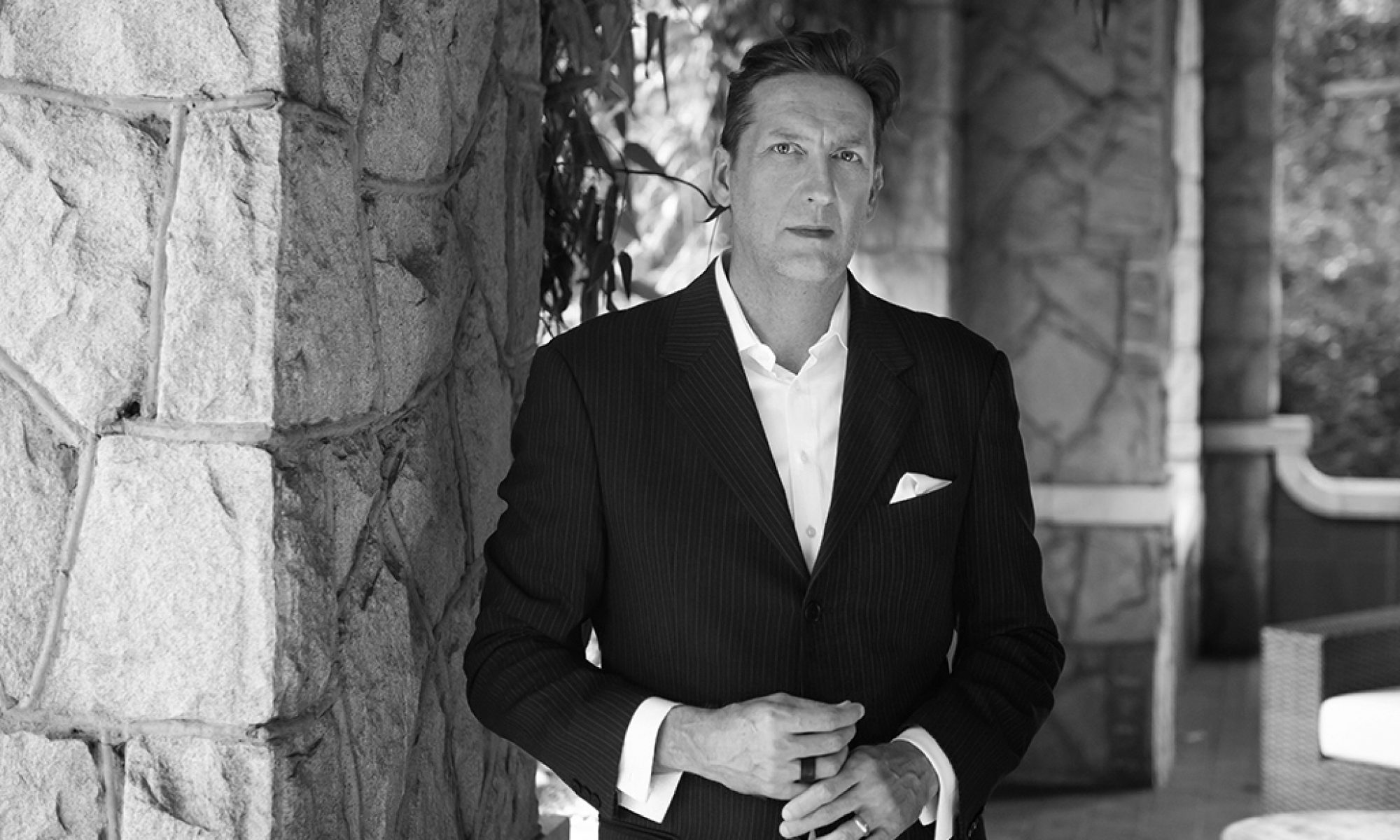I would be remiss not to post our new record here. To be widely available, hopefully soon.
Lego my LIGO
Congratulations to the scientists at the Laser Interferometer Gravitational-Wave Observatory for the discover that confirms a fundamental premise of how gravity operates:
Albert Einstein’s Theory of General Relativity predicted gravitational waves 100 years ago. The theory states that gravity—the warping of space and time by mass—would manifest as ripples.
The waves detected by LIGO came from the collision of two black holes more than 1 billion years ago.
Physicists have long had indirect evidence that such infinitely tiny waves exist, but never had technology capable of detecting and measuring them. A gravitational wave is about 10,000 times smaller than the width of a proton.
You could say that the real work begins now, plotting out the next moves in this new direction. But that unnecessarily plays down the magnitude of this accomplishment. It took real work to get this far. 100 years later, Einstein was right. Now there’s a ripple.
Image: impression of a gravitational wave generation, via the BBC.
Too Solar to Fail
Following on the news that Paris is spending €1bn to revamp/fix/heal Les Halles comes more news that the City Of Light is getting even more serious about where that light gets it power:
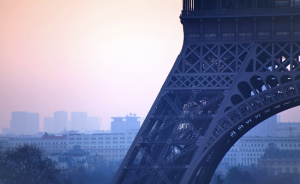
The French government plans to pave 1,000 kilometers (621 miles) of its roads with solar panels in the next five years, which will supply power to millions of people.
“The maximum effect of the program, if successful, could be to furnish 5 million people with electricity, or about 8 percent of the French population,” Ségolène Royal, France’s minister of ecology and energy, said according to Global Construction Review.
La route photovoltaïque indeed. 14 feet of solarized roadway would be enough to supply the electrical needs of one household. Way to go, Republique Francaise. Here, take this road.
The Oscars’ Lack of Diversity
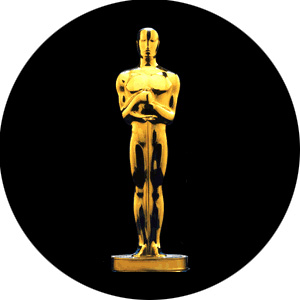 Not exactly a punchy title but… my own reaction to the monochromatic handing out of the little gold guys doesn’t feel so cheeky.
Not exactly a punchy title but… my own reaction to the monochromatic handing out of the little gold guys doesn’t feel so cheeky.
Is it the lack of good movies with stars of color? Decent roles for any other than white actors? The more questions you attempt to formulate, the more perverse this choosy reality seems. I will agree that it is positive that consensus seems to be congealing around the fact that something is wrong with this picture these pictures. But still, why is it that in 2016 only white actors are being recognized for their efforts in mass-marketed motion pictures? Even writing that sounds intentional and stupid.
Are we putting too much on the Academy?
“We absolutely are. This is not really about the Academy. The Academy is a reflection and a symptom of a very deep problem in Hollywood and, I would say, in American popular culture generally. I am fortunate enough to do a lot of my work in Los Angeles. I go to many meetings at studios in L.A. and you see, by and large the decision makers at the top of departments and organizations are almost uniformly white and largely male as well. The demographics are not the only story. The key there is not just the color of people sitting behind important desks, it’s the thought process. It’s what are deemed important stories. It’s what are deemed merely entertaining stories. I think when ‘Straight Outta Compton’ was green-lit and produced, people saw it only as an entertaining movie, not as an important movie because it was only about a hip-hop group. As opposed to seeing it as telling a story about a defining chapter in recent American history, which it actually does. It’s not just about hip-hop, which is important in and of itself, but it’s about the Rodney King riots, racial conflict and police brutality and all of these things make it important. Same with ‘Creed’.”
SMH, as the kids say (walking out of the theatre).
I knew he was not lying
Very blue planet today.
Trivialized media
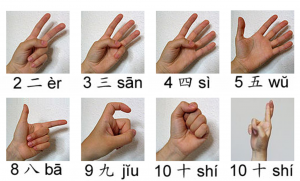 Iranian blogger Hossein Derakhshan was sent to prison in 2008 for what he had written and advocated for online. When he was released in 2014, the internet had greatly changed:
Iranian blogger Hossein Derakhshan was sent to prison in 2008 for what he had written and advocated for online. When he was released in 2014, the internet had greatly changed:
There’s a story in the Qur’an that I thought about a lot during my first eight months in solitary confinement. In it, a group of persecuted Christians find refuge in a cave. They, and a dog they have with them, fall into a deep sleep and wake up under the impression that they have taken a nap: in fact, it’s 300 years later. One version of the story tells of how one of them goes out to buy food – and I can only imagine how hungry they must have been after 300 years – and discovers that his money is obsolete now, a museum item. That’s when he realises how long they have been absent.
The hyperlink was my currency six years ago. It represented the open, interconnected spirit of the world wide web – a vision that started with its inventor, Tim Berners-Lee. The hyperlink was a way to abandon centralisation – all the links, lines and hierarchies – and replace them with something more distributed, a system of nodes and networks. Since I got out of jail, though, I’ve realised how much the hyperlink has been devalued, almost made obsolete.
The piece is full of pull quotes, so read the whole thing. How little we notice just how much social media sites and our use of them has changed is a tribute to the ingenuity of engineers in Silicon Valley. They think about this stuff all the time, so we don’t have to! But the punchline is… we do have to. Derakshan’s perspective is a stark reminder of just how limited the use of social media has made our world – all beneath the aegis of connecting, sharing and informing. Frogs eventually do notice the water boiling. It’s crucial to set the irony aside, and reset the way online convenience has conditioned us already.
There’s a resolution. Happy 2016.
Image: Count on your hands in Chinese
Grey Lady Blushes, Again
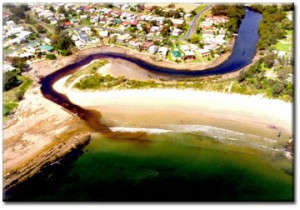 This will not get enough attention, but the source pollution problem at the New York Times, as Cholly Pierce so precisely put it, is a devious issue of national proportions:
This will not get enough attention, but the source pollution problem at the New York Times, as Cholly Pierce so precisely put it, is a devious issue of national proportions:
As is now obvious, somebody fed the paper bad information on San Bernardino murderess Tashfeen Malik’s social media habits. It was said that she was posting jihadist screeds on Facebook. The Times hyped the scoop by stating pretty clearly that the government—and the administration running it—slipped up. It was the inspiration for endless bloviating about how “political correctness is killing people” at Tuesday night’s Republican debate. Then comes FBI director James Comey to say that, no, there were no public Facebook posts that the government missed because there weren’t any at all.
More than a few people have noted that two of the three reporters who were fed this story also had their bylines on the notorious (and thoroughly debunked) piece about how the FBI had launched a “criminal inquiry” into Hillary Rodham Clinton’s alleged mishandling of classified materials in her e-mails.
Of the Clinton emails non-story, she wasn’t a target, it wasn’t a criminal referral and the emails weren’t classified. Other than that, great story! And the thing is, even pointing out this makes one sound like an HRC apologist, but nevermind.
The broader issue is, this is the problem if we’re only going to allow ourselves one national paper. The purchase of the major Las Vegas daily by its hometown casino magnate-cum-Republican kingmaker is further symptomatic of this self-replicating double-bind. The news as business, scandal as profit generator, reporters trained in the finer arts of the same and quaint rules of journalism secure under glass at the few J-schools left all equal an untenable republic. Remember: No Checks = No Balances.
What Does GreenLand Mean?
 Rapid ice melts and calving glaciers are resulting in a dark snow phenomenon in Greenland. Look at these images in the Guardian and tell yourself over and over again that nothing is happening:
Rapid ice melts and calving glaciers are resulting in a dark snow phenomenon in Greenland. Look at these images in the Guardian and tell yourself over and over again that nothing is happening:
For most of us, science is an abstract subject but aerial photography is a powerful tool to translate what environmental science is telling us. It brings a different perspective to environmental problems. You can be very clear or very abstract to make images that are inspiring and beautiful, images don’t have to be read straight ahead. It’s sort of like teasing the viewer … to find clues in the image,’ say [photographer Daniel]Beltrá
In another coincidence I just noticed, this is the 1,001st post on the site.
The Frenetic End of Oil
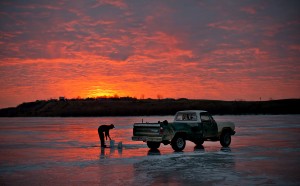 Paris talks but clean energy patents fly, it seems. This Bloomberg feature on the boom and bust of the Bakken oil fields of North Dakota has the look of a high speed news reel that is, maybe, not quite how we imagined it. But once the process shows itself from beginning to end so quickly in this way, you can imagine happening over and over again. The pollution, the waste, the overbuilding, the exodus:
Paris talks but clean energy patents fly, it seems. This Bloomberg feature on the boom and bust of the Bakken oil fields of North Dakota has the look of a high speed news reel that is, maybe, not quite how we imagined it. But once the process shows itself from beginning to end so quickly in this way, you can imagine happening over and over again. The pollution, the waste, the overbuilding, the exodus:
The discovery last decade that fossil fuels could be tapped from deep beneath the windswept prairies of North Dakota acted like a magnet on American working people. By the thousands they came, from as far as Texas and California, fortune-seekers in a modern-day Gold Rush. Together with visionary companies like Continental Resources and industry behemoths ExxonMobil and Norway’s Statoil, they exploited a new technology called fracking — blasting the underground Bakken rock formation with sand and water and slurping up the crude that was hiding there for millennia — to increase oil output in the region 12-fold from 2006 to 2014. The bonanza helped drive the U.S. closer to energy self-sufficiency than it’s been since the 1980s.
The frenzied production exacted a price — oversupply was one reason the U.S. crude price took a nosedive, losing more than half its value from a June 2014 peak. The number of rigs pumping crude from the Bakken plummeted to about 70 from a high of 200, and the tide of workers began to ebb.
Meanwhile, clean energy patents are at their all time high, which may also be a frenzied if inelegant prologue to the next age that is also not as previously imagined. In what remains of the capitalist economy, money still rushes in first, not pretty, sometimes not even choosy. But at least we can be a little more sanguine about what’s left to choose from, that the new ideas are exploding with quiet steam instead of smokey emissions, that maybe growth now will be slow and visible like the gentle oscillation of giant windmills. I know, poetry is sometimes like the explicit sunset in the image: not sure whether it’s rising or setting unless we understand the direction we’re facing.
Image: David Acker/Bloomberg, fishing in the frozen Missouri River.
Since 2001, the US has admitted roughly 750,000 refugees
 and none have been accused of involvement in domestic terrorism aimed at the US homeland, as pointed out by The Economist and included in Juan Cole’s excellent list of why we shouldn’t be so cowardly about accepting refugees:
and none have been accused of involvement in domestic terrorism aimed at the US homeland, as pointed out by The Economist and included in Juan Cole’s excellent list of why we shouldn’t be so cowardly about accepting refugees:
8. The US owes these refugees. Without the US invasion of Iraq in 2003, there would have been no al-Qaeda in that part of the world, and no al-Qaeda offshoots like Daesh/ ISIL. Why do the governors (most of whom supported the invasion of Iraq) think the US can go around the world sowing instability and being responsible for creating the conditions that lead to millions of refugees but then can avoid the responsibility of ameliorating those broken lives?
Number 8 is important but the whole list is good. As Pierce pointed out, when the president of France confirmed yesterday that they would accept 30,000 Syrian refugees, the argument is effectively over. Sorry, this pandering foolishness must end. Yes, people can be and are scared. But the ones we should be focused on are those forced to leave their homes with young children.
Image via Reuters.
